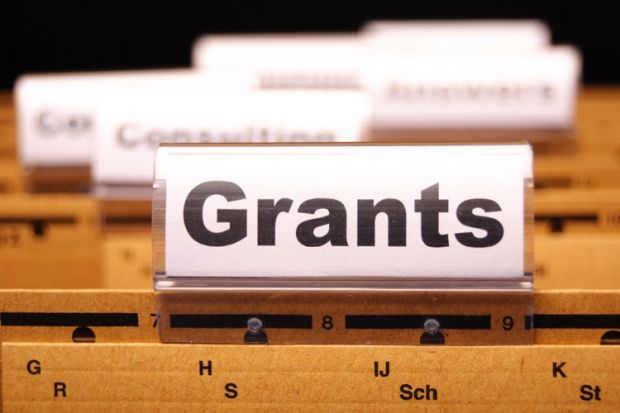Leverhulme Trust
Research project grants
Sciences
- Award winner: Hon Wai Lam
- Institution: University of Nottingham
- Value: £180,351
Remote functionalisation by the chain walking of allylmetal species
- Award winner: James Hodge
- Institution: University of Bristol
- Value: £210,844
Optogenetic imaging and remote control of fly electrical clock
- Award winner: Diego Gómez-Nicola
- Institution: University of Southampton
- Value: £236,866
Understanding the dynamics and diversity of microglia in the healthy and ageing brain
Engineering and Physical Sciences Research Council
- Award winner: Sergio Sanchez
- Institution: Northumbria University
- Value: £100,447
Cost-effective temperature adaptive Cu-based shape memory seals through the synergistic effect of co-microalloying and cooling rate control
- Award winner: Buddhapriya Chakrabarti
- Institution: Durham University
- Value: £1,034,680
Molecular migration in complex matrices: towards predictive design of structured products
- Award winner: Marco Marengo
- Institution: University of Brighton
- Value: £722,093
Novel hybrid heat pipe for space and ground applications
Biotechnology and Biological Sciences Research Council
Research grants
- Award winner: Veronique Azuara
- Institution: Imperial College London
- Value: £526,029
Trafficking, storage and timely release of lipids: unfolding the fundamental mechanisms underlying metabolic reprogramming in pluripotent stem cells
- Award winner: Sinead English
- Institution: University of Cambridge
- Value: £284,735
Epidemiological consequences of reproductive senescence in a long-lived vector
- Award winner: Ildiko Kemenes
- Institution: University of Sussex
- Value: £695,885
Updating of memories during memory consolidation
In detail
Leverhulme Trust
Award winner: Geoffrey Evatt
Institution: University of Manchester
Value: £258,599
The lost meteorites of Antarctica
This project aims to discover a lost hoard of meteorites, which reside, the team has hypothesised, just a few centimetres below the surface of Antarctica’s remote blue-ice regions. “Antarctica is the best place on earth for collecting meteorites,” Geoffrey Evatt, senior lecturer in applied mathematics at the University of Manchester, told Times Higher Education. “However, iron meteorites account for around 0.5% of the collected specimens on the Antarctic continent, as compared to the proportion of 5.5% collected elsewhere on earth. As such, a significant number of iron meteorites appear to be ‘missing’ from the Antarctic record.” Dr Evatt and his team hope to find new regions of Antarctica that hold meteorites on their surface, and then, using wide metal detectors, search for the sub-surface layer of iron meteorites. “We shall then carefully extract them and bring them back to the UK for examination,” he said. “Each meteorite contains valuable information [about] the formation of the solar system. In particular, iron meteorites help us to understand the formation of planets (because iron meteorites used to form the core of planetissimals – small planets that were later destroyed). Our retrieved samples will help greatly in that regard.”
Register to continue
Why register?
- Registration is free and only takes a moment
- Once registered, you can read 3 articles a month
- Sign up for our newsletter
Subscribe
Or subscribe for unlimited access to:
- Unlimited access to news, views, insights & reviews
- Digital editions
- Digital access to THE’s university and college rankings analysis
Already registered or a current subscriber? Login
